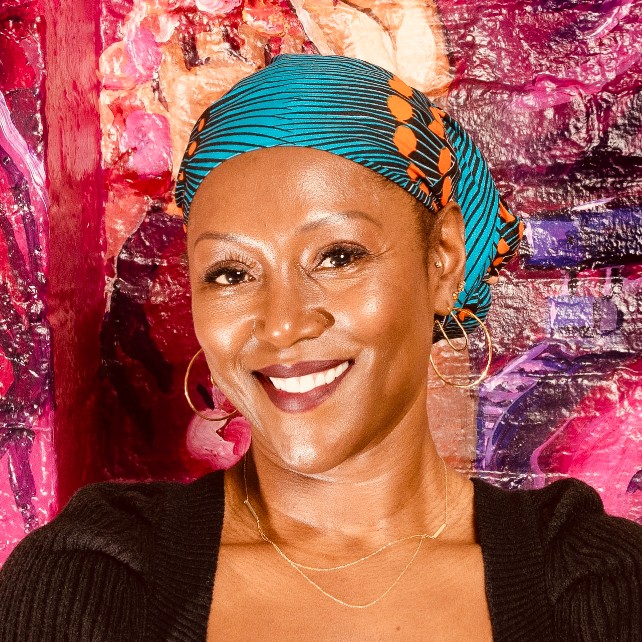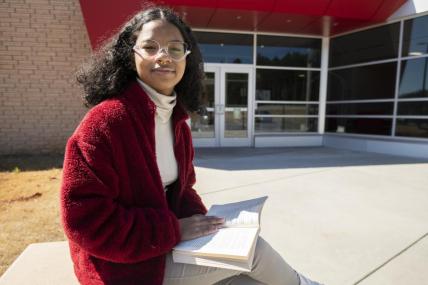Cultivating the transformative power of girls
OPINION: As we celebrate the International Day of the Girl, we must invest in and support the leadership of girls to help bring their visions of justice and freedom to life.

Editor’s note: The following article is an op-ed, and the views expressed are the author’s own. Read more opinions on theGrio.
Azariah, an 18-year-old artist and activist working with Chicago’s A Long Walk Home, collaborated with a dozen neighborhood teens to transform an abandoned liquor store into a fresh produce market. Austin Harvest, as it is called and where Azariah also works, now sources fruit, healthy food and flowers from local suppliers across the city and provides nutritious and healthful choices for her community.
Azariah and her peers are an example of what we can accomplish when we trust and abundantly invest in the leadership of girls. Research reveals young Black and Latinx girls are more likely than others to identify as leaders and yet, women and girls of color collectively receive less than 1% of all philanthropic investments.
Meanwhile, girls show us every day the transformative power of their leadership. Young people like Emma, Maria and Cielo served as youth consultants and facilitated a healing retreat for queer and trans youth of color in the South. They collaborated with Familia: Trans Queer Liberation Movement and created a safe space for young people to heal and step into their full potential through the lens of rest and play.
Young people are pushing our communities and leaders to expand our visions of justice and equity. This includes developing a gender analysis that includes girls and femmes as they articulate the dynamic nature of their identities. To fully elevate and amplify girls’ leadership, we must invest in their well-being. This means we must recognize how girls’ youth show up in leadership — this requires adults to both cede power and seed power.
To cede power is to release it. To seed power is to leverage our own resources to grow opportunities for leadership. This is the commitment of many adult community leaders, liberatory educators, advocates and others who understand that only when we release some of the power that adults inherently hold, are we able to co-construct the type of communities that fully appreciate and develop the power of young people. When we lean into their wisdom —and their leadership— we’re able to bring to life their visions for justice and freedom.
Because if we look around, we start to notice the leadership skills young people like those in the Grantmakers for Girls of Color’s (G4GC) community named above, and their colleagues, have already shown.
It looks like the work of the young leaders at The International Mayan League, which promotes, preserves and transmits the cosmovision, worldview, culture, history and ancestral contributions of the Maya people. Some of these Maya youth have courageously challenged injustice at great personal risk — they were forced to flee Guatemala due to the defense of their people and land. Still, they are steadfastly working intergenerationally to engage in practices that restore their cultures and languages, which create healing spaces through relearning their cultures and ceremonial practices. Through interpretation training programs for Maya people, these youth are revitalizing their languages, preserving oral traditions and enforcing the fact that Indigenous communities have specific needs, knowledge and solutions we must center.
Leadership also looks like the young people at Freedom Inc. in Madison, Wisc., who successfully organized to remove the Madison Police Department from Madison Metropolitan School District campuses and continue to advance justice in schools and communities for Black and Southeast Asian youth. These youth are working to make schools truly safe for all students. As part of their work, they launched the Black Sanctuary Pledge to ensure that schools are sanctuaries for Black students, which expands my own work and the work of others to facilitate schools as locations for healing.
Organizations that support women and girls receive only 1.9% of philanthropic giving in the United States. Girls receive only a portion of that. If girls can make this level of transformative impact with the scarce resources to which they currently have access, imagine what they could accomplish if we committed to a daily practice of ceding power where necessary and seeding power by pouring into the financial, human and institutional resources that will help them realize their full potential. As we celebrate the International Day of the Girl, let’s make this day mean more than just visibility. Now, more than ever, it is time to invest in the transformative power of girls.

Dr. Monique Couvson is the president and CEO of G4GC and the author of six books, including “Charisma’s Turn” (The New Press, 2023), a graphic novel about girls and their gifts.
TheGrio is FREE on your TV via Apple TV, Amazon Fire, Roku and Android TV. Also, please download theGrio mobile apps today!


